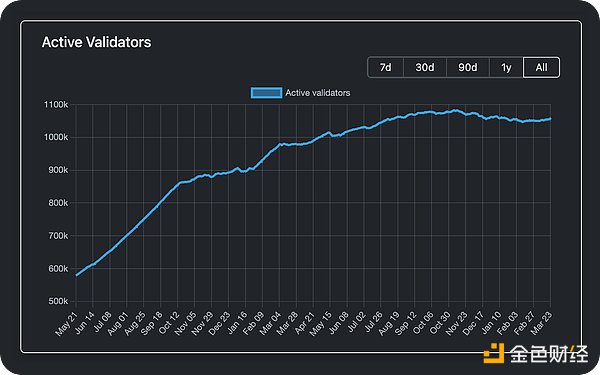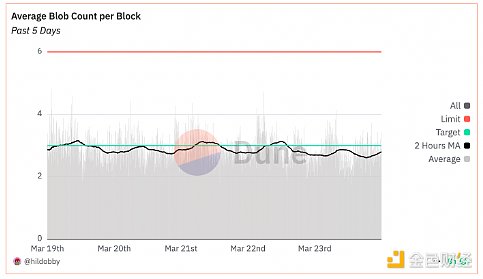Author: David C, Bankless; Translator: AIMan@黄金财经
Ethereum continues to develop steadily behind the scenes. Amid the ongoing debate about the "correct" roadmap for the world computer, developers have been moving forward steadily, steadily preparing for two major upgrades: Pectra (scheduled for May 2025) and Fusaka (scheduled for the end of 2025).
Each technology has its own nuances, such as improving validator efficiency, increasing the data capacity of 2-layer Rollup, and improving wallet functionality - all of which are intended to make Ethereum more scalable and accessible.
In this article, we will take a closer look at these two major upgrades, giving you insight into how these upgrades fit into Ethereum's broader efforts to stay ahead of user needs, maintain security, and build a more user-friendly network. Let's take a deep dive!
What Pectra brings to Ethereum
After multiple delays and testnet accidents, Pectra is now scheduled to be launched on the mainnet around May 2025, bringing improvements to staking, blobs, and account abstraction. Here are its core upgrades:
Staking and validator upgrades
Since Ethereum introduced validator withdrawals during Shapella, the biggest code change may be achieved through an upgrade commonly referred to as "MaxEB".
Under the current rules, each validator can only receive staking rewards of 32 ETH (maximum effective balance MaxEB), which means that large staking providers like Lido or Coinbase will launch multiple validator nodes to stake more than 32 ETH. While a large validator set sounds good for decentralization, it can be more cosmetic since they all typically operate under one umbrella, and it can also slow down the network and increase overhead for everyone.
Pectra will change this by increasing MaxEB from 32 ETH to 2048 ETH, a major leap proposed by EIP-7251. As a result, large stakers and operators can consolidate their existing validators, freeing up bandwidth for the entire network and making it run more smoothly. At the same time, it does not affect the minimum required to run a validator, which remains 32 ETH, but now individual stakers can also stake more and their staking rewards will automatically increase.

https://www.validatorqueue.com/
While this sounds centralized, keep in mind that this also increases penalties for bad behavior. For example, the slashing penalty (the amount of money that is confiscated when a validator behaves maliciously) is proportional to the amount of ETH they hold. If something goes wrong, any validator with 2,048 ETH will face an extremely high initial slashing penalty.
Increased Blob Data Capacity
In terms of scalability, Pectra is built on the Dencun hard fork (EIP-4844). The Dencun fork introduced “blobs” as a cheaper way for L2 to publish data on Ethereum. But as on-chain usage grew, blob fees kept rising as they continued to exceed the target amount per block. Pectra fixes this by increasing the minimum blob capacity from 3 to 6, and the maximum average blobs per block from 6 to 9 (via EIP-7691). In other words, it improves current capacity so L2 can keep fees low and continue to call Ethereum home.

Source: Dune @hildobby
This appears to be just the beginning, Vitalik has stated that his ideal goal is to reach 48/72 blobs, which is a huge leap, but given the relatively modest growth predicted by Pectra, it may still be some way off. The entire debate remains one of the most controversial topics in the Ethereum community, with researchers and ETH holders divided over whether to prioritize supporting ordinary L2 users or preserving the economic value of ETH, with some arguing that blob space is being weakened.
It’s a delicate balancing act, forcing Ethereum to make difficult decisions about who to optimize for in the end. Time will tell which tradeoff leads to a stronger long-term future.

Source: Dune @hildobby
Adding Account Abstraction
A long-standing buzzword in Ethereum is account abstraction: letting regular wallets add “smart” features, like social recovery or automatically approved transactions.
The end result? More user-friendly wallets, without the complicated setup and security steps. EIP-7702 in Pectra improves upon the original EIP-4337 to implement account abstraction, which will allow standard Ethereum addresses to bundle transactions, sponsor gas fees, and use advanced authentication methods such as keys. Users can also set spending limits or use social recovery to regain control when they lose their keys. In short, there are fewer pop-ups, less hassle, and the overall experience is smoother and more friendly to novices, while allowing OGs to make more personalized settings.
Ethereum Fusaka Upgrade
Once Pectra is over, attention will turn to the next upgrade - Fusaka. Vitalik hopes to upgrade on the testnet as soon as Pectra goes live. The current target is the end of 2025. While this may change, the scope of the upgrade will likely remain the same, centering around a few core updates:
By 2025, we need Fusaka with PeerDAS on L1, ideally with blob targets/limits of 48/72
We aim to have a Fusaka testnet running with these blob parameters the day after Pectra goes live.
— vitalik.eth (@VitalikButerin) March 1, 2025
Pure Data Availability Sampling (PeerDAS)
One of the main goals of Fusaka is to leverage PeerDAS to improve data availability.Currently, every Ethereum node must download all the data in every block, which not only slows things down but also makes it more affordable to run a node.
PeerDAS flips this model on its head — each node downloads only a small portion of the data, and uses cryptographic checks to confirm that the full data set still exists. Imagine a group of people at a concert, each recording a snippet of the performance; no one has the entire video, but together they can prove that the entire event took place.
The PeerDAS model reduces the amount of data that nodes need to store and share, making their jobs easier, which helps ethereum handle more activity.But there’s a catch: Validators still need to check certain data to make sure everything is running smoothly. Currently, the system for providing this data depends on how many validators are active, and if that number changes quickly — if a group of validators leave or merge — it can cause problems. Don’t worry, though: Because PeerDAS is a priority before other upgrades, it’s already in testing, and ethereum core developers have been told to prioritize it before other upgrades. If successful, it will improve ethereum’s scalability, make it easier to run a node, and keep the network decentralized as usage grows.
Ethereum Object Format (EOF)
Another core feature of Fusaka is a complete overhaul of the Ethereum Virtual Machine (EVM) through a feature called Ethereum Object Format (EOF).
The upgrade modernizes the structure of smart contracts by clearly separating contract code from data, improving security and making the entire system more organized.
As the largest developer environment, consolidating the EVM with EOF will go a long way toward making smart contracts easier and safer to write, helping developers avoid common mistakes and vulnerabilities. Additionally, by targeting the core structure of Ethereum contracts, EOF lays the foundation for faster and more reliable development in the future.
Minimalist Approach
Overall, Fusaka is designed with the philosophy of “less is more.” Developers want to focus the upgrade on a few key changes — namely PeerDAS and EOF — so that they can be tested and released more quickly without introducing too much complexity all at once.
Nevertheless, a number of other proposals are still under consideration. One of them is EIP-7688, which builds on an earlier upgrade (EIP-4788) and allows smart contracts to check important network information (such as who the current validators are or what the latest block is) so that they can make decisions based on that.
If the team decides to focus fully on PeerDAS first, EIP-7688 may be pushed back to a later upgrade. But for now, Fusaka remains intent on keeping it lean and focused on the most important changes.
Ethereum development continues to move forward. While it may seem to be moving slowly and with delays, the value that rests on its stability (billions of dollars, to be exact) means that extensive testing must be a priority, not a luxury.
So Pectra and Fusaka will continue in this role and take the necessary pounding to ensure that they are indeed achieving their goals.
Additionally, while Layer 1 execution scaling remains an ongoing priority, it is not the immediate primary focus of these upcoming upgrades, which are more focused on expanding Layer 2 functionality and improving network accessibility for users and developers. However, testing to scale Layer 1 by increasing the block limit is already underway!
Overall, between Pectra and Fusaka, Ethereum is poised to significantly expand its foundation, making life easier for L2 and its users while solidifying its core with MaxEB and the Ethereum Object Format. Together, these upgrades make the blockchain a secure, scalable network that is equally welcoming to newcomers and veterans alike.
 Brian
Brian






